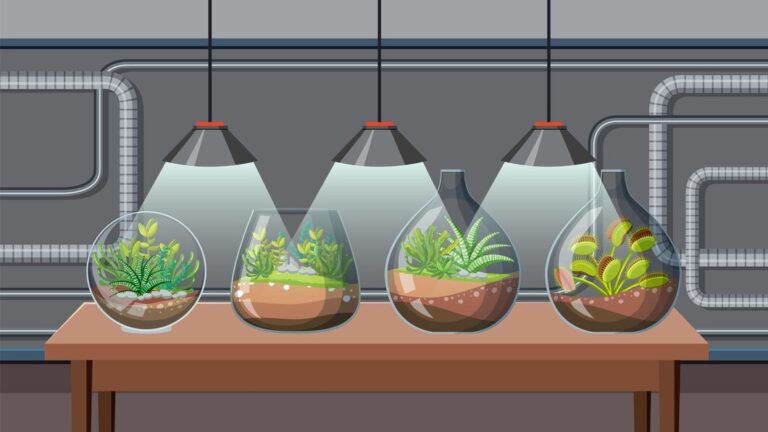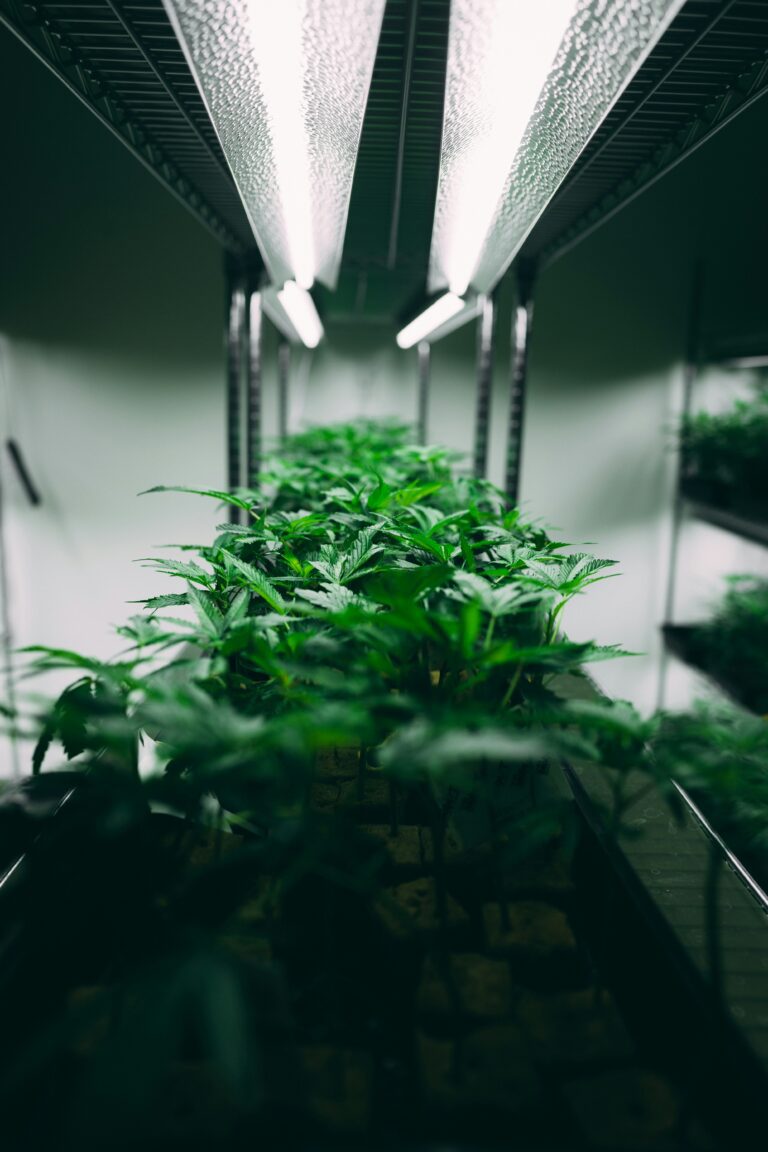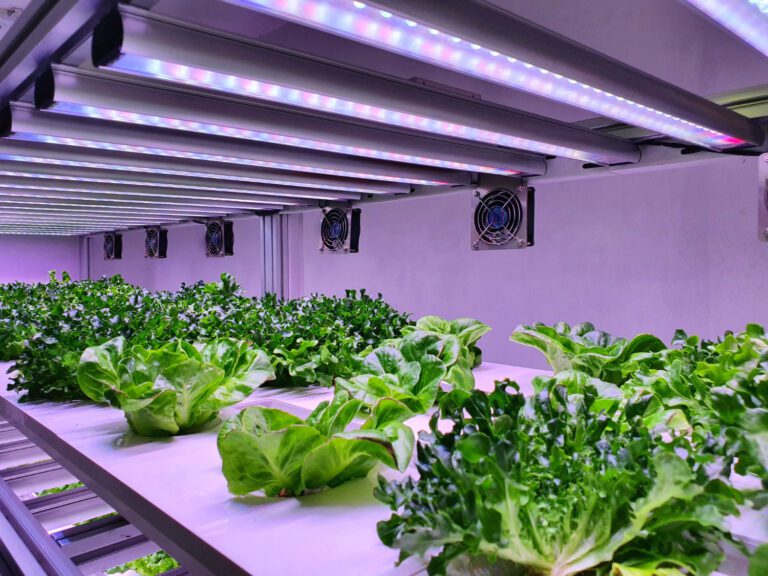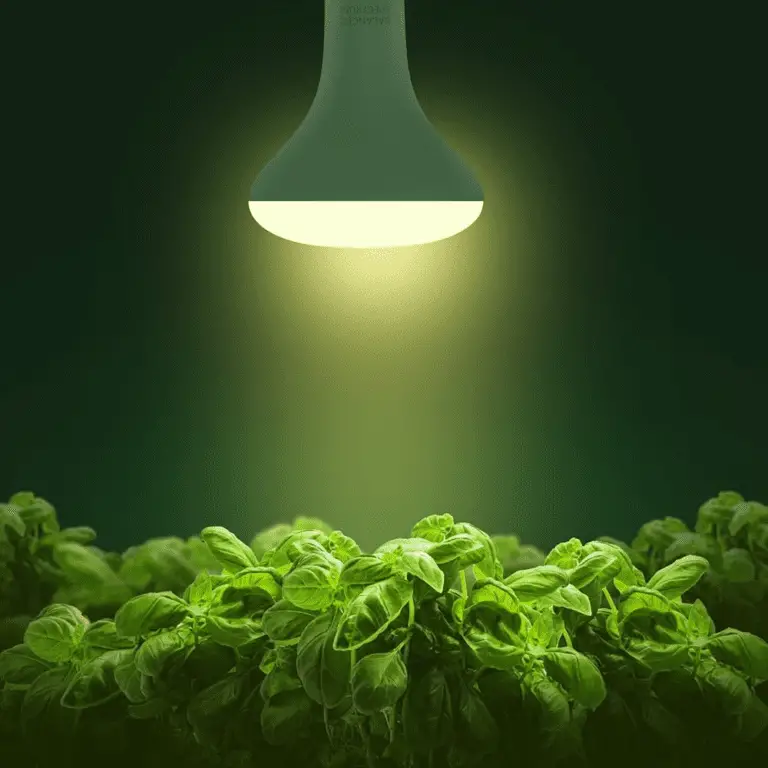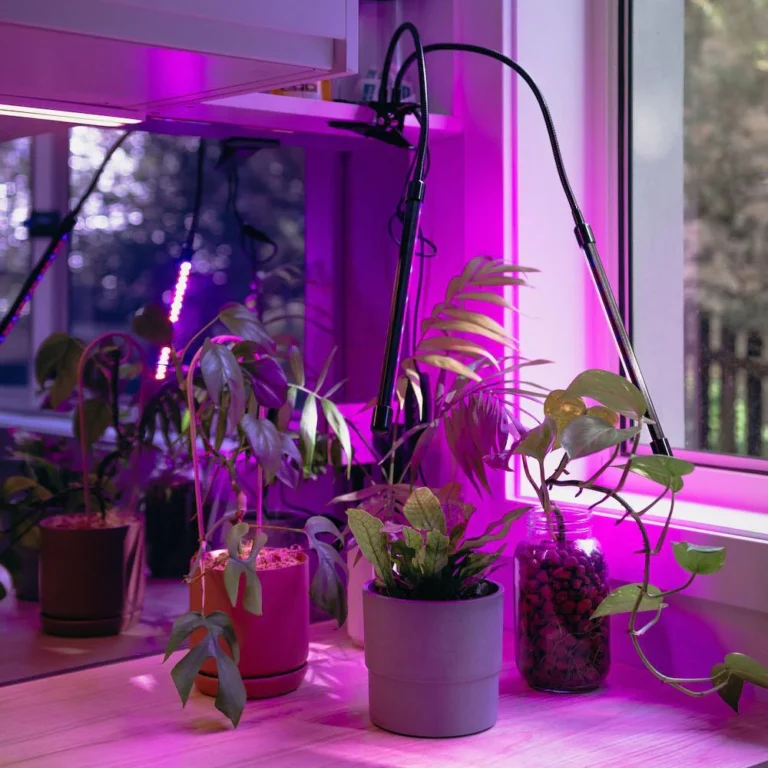Grow Light Coverage Calculator: How to Calculate and Maximize Your Grow Light Efficiency and Coverage Area
Table of Contents
Grow Light Basics
Private growers and commercial farmers alike have turned to grow lights as a solution for providing their plants with the essential light they need for optimal growth. Grow lights are artificial light sources designed to mimic the natural sunlight that plants require to carry out photosynthesis. By providing the necessary light spectrum and intensity, grow lights allow plants to thrive in indoor environments without relying solely on natural light.
There are various types of grow lights available in the market, each with its own advantages and drawbacks. The most common types include fluorescent, high-intensity discharge (HID), and light-emitting diode (LED) lights. Fluorescent lights are relatively affordable and suitable for smaller-scale setups or for starting seedlings. HID lights are known for their high output and intensity, making them ideal for larger grow spaces. LED lights, on the other hand, have gained popularity in recent years for their energy efficiency and versatility in spectrum control. Understanding the different types of grow lights will help you choose the right option for your specific needs and budget.
Determining Your Lighting Needs
Determining Your Lighting Needs:
When it comes to indoor gardening, determining your lighting needs is crucial for the success of your plants. Light is an essential component for photosynthesis, the process by which plants convert light energy into chemical energy to fuel their growth. Understanding your lighting requirements will enable you to provide the optimal conditions for your plants and maximize their productivity.
To determine your lighting needs, you must consider the specific requirements of your plants. Different plants have varying light requirements based on their natural habitat and growth stage. Some plants thrive in direct sunlight, while others prefer partial shade. Research the lighting preferences of the plants you intend to grow and take note of the recommended light intensity, duration, and spectrum. This information will help you choose the most suitable grow light to provide your plants with the necessary light energy for healthy and robust growth.
Understanding Light Intensity
An essential aspect of indoor gardening is understanding light intensity. Light intensity refers to the amount of light energy that falls on a given area over a specific period. It is measured in units called foot-candles or lux, which indicate the number of lumens per square foot or square meter, respectively.
The intensity of light plays a crucial role in plant growth and development. Different plants have varying light requirements, and providing the right intensity is vital to ensure optimal photosynthesis and overall health. Insufficient light intensity can lead to stretched, weak stems, pale and small leaves, and poor flowering or fruiting. On the other hand, excessive light intensity can cause leaf burn, wilting, and stunted growth. Achieving the right balance of light intensity is key to promoting healthy plant growth and maximizing yields.
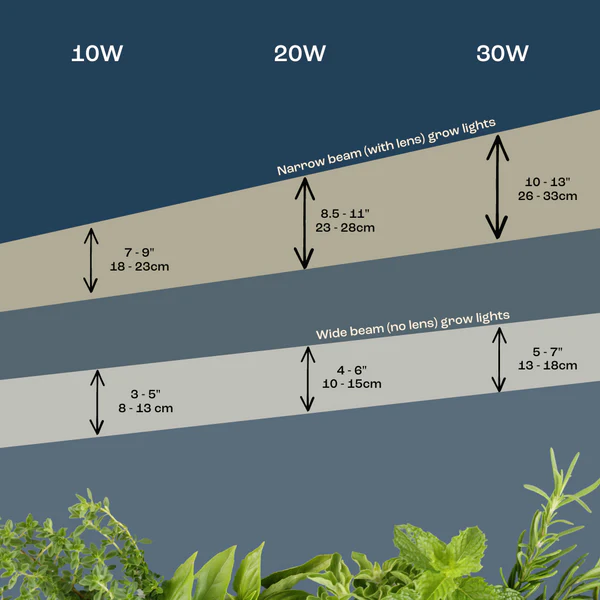
Factors Affecting Coverage Area
Factors Affecting Coverage Area
Light coverage area is an essential consideration when choosing a grow light for your indoor gardening setup. Several factors can influence the coverage area of a grow light, and understanding these factors will help you maximize the efficiency of your lighting system.
One of the key factors affecting coverage area is the type of grow light you choose. Different types of lights, such as fluorescent, LED, or HID, have varying light distribution patterns and intensity. For example, LED grow lights generally have a more focused beam angle, providing a concentrated light that can cover a smaller area effectively. On the other hand, fluorescent lights typically have a wider beam angle, spreading the light over a larger coverage area but with lower intensity.
Another factor to consider is the wattage or power output of the grow light. Higher wattage lights typically have a greater coverage area than lower wattage lights. However, it is important to note that the coverage area may vary depending on the specific brand and model of the grow light. Some manufacturers provide information on the coverage area based on the recommended hanging height and light intensity for optimal plant growth.
Light height and angle also play a significant role in determining the coverage area. The distance between the grow light and the plants can affect the intensity and spread of the light. Generally, hanging the light closer to the plants will result in a smaller coverage area but higher light intensity, while raising the light further away will increase the coverage area but decrease the intensity. The angle at which the light is directed can also influence the coverage area, as a tilted or angled light can provide better coverage across the entire growing area.
By considering these factors affecting coverage area when selecting, positioning, and adjusting your grow lights, you can ensure that your plants receive the optimal amount and quality of light for healthy growth and maximum yields.
Let’s delve into the factors that influence the coverage area of grow lights for plants. These factors play a crucial role in determining how effectively your indoor plants receive light. Here’s a table summarizing these key considerations:
| Factor | Description | Impact on Coverage Area |
|---|---|---|
| 1. Type of LED Light | Different LED grow lights have varying intensities. | The recommended hanging distance will vary based on the specific light type. Refer to the manufacturer’s guidelines. |
| 2. Growth Stage of the Plant | Seedlings, vegetative stage, and flowering stage have distinct light requirements. | Adjust the light height accordingly: 6-12 inches for seedlings, 18-24 inches for vegetative growth, and 18-30 inches during flowering. |
| 3. Intensity of the Light | High-intensity lights need more distance to prevent leaf burn. | Keep intense lights farther away to avoid damaging plant foliage. |
| 4. Canopy Coverage | Refers to the light spread over the entire group of plants (canopy) in your grow area. | Ensure even distribution across all plants within the canopy. |
| 5. Plant Coverage | The amount of light each individual plant receives. | Consider both individual plant needs and overall canopy coverage. |
| 6. Reflective Surfaces | The type of reflector used and room wall reflectivity. | Reflective surfaces enhance light distribution. |
| 7. Distance from Light Source | Light intensity diminishes with distance from the bulb. | Adjust light height to maintain optimal intensity. |
Remember that while LED grow lights are essential for indoor plant growth, too much light can be detrimental. Leaf burn and stunted growth may occur if lights are placed too close. Gradually acclimate plants to the light to avoid these issues.
Choosing the Right Grow Light
When choosing the right grow light for your indoor garden, several factors need to be considered to ensure optimal plant growth and health. One of the most crucial aspects to evaluate is the light spectrum emitted by the grow light. Different plant species have varying light requirements, with some favoring blue light for vegetative growth and others requiring red light for flowering and fruiting stages. Therefore, selecting a grow light that offers adjustable spectrum options can provide you with the flexibility to meet your plants’ specific needs throughout their growth cycle.
Another essential factor to consider is the light intensity or brightness. Light intensity is typically measured in units called foot-candles or lux, and different plants have different light intensity requirements. It is crucial to choose a grow light that can provide an adequate amount of light for your plants, ensuring they receive the energy they need to carry out photosynthesis effectively. Taking into account the size of your growing area and the specific light needs of your plants will help determine the appropriate wattage and coverage area for your grow light.
Optimizing Light Efficiency
To optimize light efficiency in your grow operation, there are several factors to consider. Firstly, selecting the right type of grow light is essential. LED grow lights have gained popularity in recent years due to their energy efficiency and spectrum adjustability, allowing for better customization based on plant requirements. On the other hand, high-intensity discharge (HID) lights like metal halide (MH) and high-pressure sodium (HPS) are known for their high light output and penetration, making them suitable for larger or more intensive setups.
Another aspect to focus on is light intensity and distribution. Providing the proper light intensity is crucial for healthy plant growth. Different plant stages require varying light intensities, so it is essential to adjust the brightness accordingly. Additionally, ensuring even light distribution throughout the growing area promotes uniform growth and reduces the risk of shadowing. Utilizing light reflectors can help redirect and amplify light, maximizing its coverage and efficiency.
In the upcoming paragraphs, we will delve deeper into the specifics of measuring light output and calculating coverage area to further enhance your understanding of optimizing light efficiency.
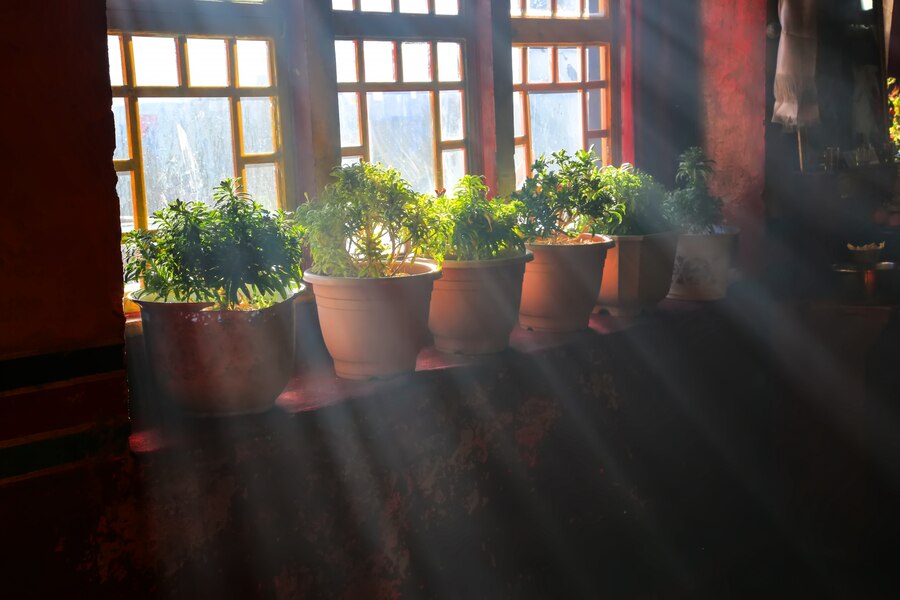
Measuring Light Output
When it comes to measuring light output for your grow lights, it is important to have a clear understanding of the metrics involved. The most common unit for measuring light intensity is the candela (cd), which represents the luminous intensity of a light source in a specific direction. Another important metric is the lumen (lm), which measures the total amount of visible light emitted by a source. It is important to note that lumens alone may not provide an accurate representation of light output for plants, as different wavelengths of light have varying effects on plant growth and development.
To accurately measure light output for your grow lights, it is recommended to use a specialized tool called a quantum PAR meter. This device measures photosynthetically active radiation (PAR), which represents the wavelengths of light that are most beneficial for plant growth. The quantum PAR meter provides readings in micromoles per square meter per second (μmol/m²/s), which is a comprehensive measurement of the amount of light available for photosynthesis.
In addition to using a quantum PAR meter, it is also important to consider the spectral distribution of light output. Different types of plants have varying light requirements, so it is crucial to ensure that the grow lights emit an appropriate balance of wavelengths. This can be achieved by using a spectroradiometer, which measures the intensity of light at different wavelengths. By analyzing the spectral distribution, you can fine-tune your grow light setup to provide the optimal light spectrum for your plants’ specific needs.
By accurately measuring light output and considering the spectral distribution, you can ensure that your plants receive the right amount and quality of light for optimal growth and development.
Calculating Coverage Area
To determine the coverage area of a grow light, it is essential to understand the light intensity emitted by the light source. Light intensity is typically measured in foot-candles (fc) or lux, and it refers to the amount of light reaching a specific area. The coverage area of a grow light depends on the light intensity required by the plants being cultivated.
Different plants have varying light intensity requirements at different growth stages. For example, leafy greens and herbs generally require around 20-40 fc during the vegetative stage, while flowering plants may need 30-50 fc or more during the flowering stage. It is crucial to research the specific light requirements of the plants you are growing and consider their growth stage to accurately calculate the coverage area for your chosen grow light.
Once you have determined the light intensity required, you can estimate the coverage area by considering the light distribution pattern of the grow light. Some lights emit light in a circular pattern, while others may have a rectangular distribution. Understanding the light distribution pattern is crucial in calculating the coverage area accurately. Additionally, factors such as the light height and angle, the utilization of light reflectors, and maintaining proper light distribution play a role in optimizing the coverage area.
Calculating the coverage area of a grow light is crucial for ensuring that plants receive adequate light for healthy growth. By understanding the light intensity requirements of your plants and considering the factors that affect coverage area, you can select the right grow light and maximize the efficiency of your indoor gardening endeavors.
Let’s create a table for calculating grow light coverage area. The coverage area depends on various factors, including the type of light, intensity, and the specific needs of your plants. Here’s a simple table to guide you:
| Factor | Description | Formula |
|---|---|---|
| 1. Light Intensity | Measured in PPFD (Photosynthetic Photon Flux Density). | Coverage Area = Total Light Output (Watts) / Desired PPFD |
| 2. Hanging Height | Distance between the light source and the plant canopy. | Coverage Area = π × (Hanging Height)^2 (for circular coverage) |
| 3. Canopy Size | The area covered by your plants. | Coverage Area = Canopy Length × Canopy Width (for rectangular coverage) |
| 4. Light Distribution | Evenly spread light across the canopy. | Adjust hanging height or use multiple lights for uniform coverage. |
Remember to consider the specific light requirements of your plants and adjust accordingly.
Factors to Consider for Maximum Efficiency
Factors to Consider for Maximum Efficiency
When it comes to maximizing efficiency in your grow light setup, there are several important factors to consider. First and foremost, it is crucial to choose the right type of grow light for your specific plants and growth stage. Different plants have varying light intensity requirements, and selecting a grow light that meets these needs is essential for optimal growth and development.
In addition to light intensity, the coverage area of your grow light also plays a significant role in efficiency. Determining the size of the area you need to illuminate will help guide your choice of grow light and ensure that all plants receive adequate light for healthy growth. Factors such as plant height, density, and growth stage should all be taken into account when calculating the coverage area.
Furthermore, proper light distribution within your grow space is another consideration for maximum efficiency. Ensuring that light is evenly distributed across all plants will help prevent uneven growth and ensure that every plant receives the necessary light for photosynthesis. Utilizing light reflectors can help redirect stray light and optimize light distribution, further enhancing efficiency in your grow light setup.
By carefully considering factors such as light intensity, coverage area, and light distribution, you can maximize the efficiency of your grow light setup and provide optimal conditions for your plants’ growth. Keep in mind that these factors may vary depending on the specific requirements of your plants, so it is important to conduct thorough research and seek expert advice to ensure the best results.
Adjusting Light Height and Angle
To maximize the growth and yield of your plants, it is crucial to adjust the height and angle of your grow lights. Properly positioning your lights helps ensure that your plants receive the optimal amount of light for their growth stages.
When adjusting the height of your grow lights, it is important to consider the specific needs of your plants. During the seedling stage, lights should be positioned closer to the plants, typically around 18-24 inches. As the plants mature and enter the vegetative or flowering stage, the lights should be raised gradually to maintain the ideal light intensity. This gradual increase in height prevents light burn and ensures that the plants receive an even distribution of light across all foliage.
In addition to adjusting the height, the angle of your grow lights is also significant for maximizing their effectiveness. The angle should be set to provide uniform coverage across the entire canopy of your plants. Tilt the lights slightly to cover the outer edges of the canopy and avoid shading any part of the plants. By finding the right balance between height and angle, you can create an environment that promotes healthy plant growth and encourages the development of robust yields.

Utilizing Light Reflectors
Light reflectors are an essential tool in maximizing the efficiency of your grow lights. By directing light towards your plants and preventing wasted light from escaping, reflectors help to optimize the light distribution in your growing space. This can result in better coverage and intensity, ultimately leading to healthier plants and increased yields.
When utilizing reflectors, it is important to choose the right type for your specific needs. Different materials and designs can have varying levels of reflectivity, so consider factors such as light intensity, coverage area, and the type of plants you are growing. Aluminum and silver are commonly used materials for reflectors due to their high reflectivity, but it is worth noting that silver can degrade over time and lose some of its effectiveness.
Additionally, consider the angle and positioning of your reflectors. Placing them at an optimal angle can help to direct light towards areas that may not receive as much natural light, encouraging more even growth. To further enhance light distribution, some growers use a combination of reflectors, strategically positioning them to ensure that all parts of the plant receive adequate light.
Maintaining Proper Light Distribution
Maintaining proper light distribution is essential for maximizing plant growth and ensuring healthy development. Uneven or insufficient light distribution can lead to stunted growth, uneven flowering, and reduced overall yield. To maintain optimal light distribution, it is important to consider factors such as light height and angle, light reflectors, and monitoring and adjusting over time.
One key factor in maintaining proper light distribution is adjusting the height and angle of the grow lights. As plants grow, their light needs change, and it is important to raise or lower the lights accordingly. This ensures that the light is evenly distributed across all the plants, avoiding overshadowing or underexposure. Additionally, adjusting the angle of the lights can help direct the light where it is needed the most, ensuring that all areas of the plants receive adequate light for photosynthesis.
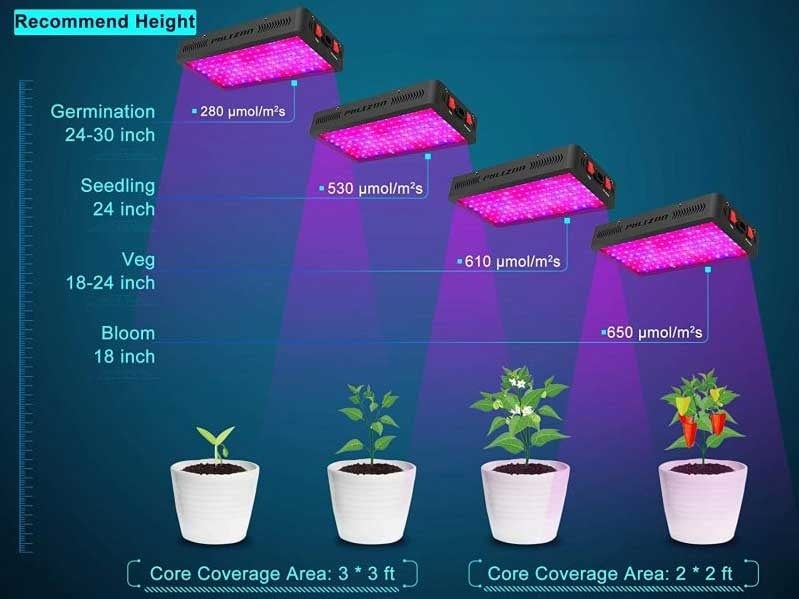
Another effective method for maintaining proper light distribution is utilizing light reflectors. Light reflectors help redirect light that would otherwise be lost or wasted. By strategically placing reflectors around the grow area, more light can be directed towards the plants, increasing efficiency and maximizing light distribution. Reflectors can be made of various materials, such as aluminum or mirrored surfaces, to effectively bounce light in the desired direction.
To maintain optimal light distribution over time, it is crucial to regularly monitor and adjust the lighting setup. This can involve checking for any shadows or areas of insufficient light coverage and making the necessary adjustments to ensure consistent and uniform distribution. It is also important to monitor any changes in plant growth and adjust the lighting accordingly. Regularly assessing the light distribution and making necessary adjustments will help ensure that plants are consistently receiving the right amount of light for healthy growth and development.
Monitoring and Adjusting Over Time
As a diligent gardener, it is important to continuously monitor and adjust your grow lights over time to ensure optimal plant growth and health. By closely monitoring your plants and paying attention to their response to the current lighting conditions, you can make necessary adjustments to maximize their growth potential. Regular observation of factors such as light intensity, distance, and angle can provide valuable insights into the performance of your grow lights.
One crucial aspect to monitor is the distance between the light source and your plants. Different plant species have varying light requirements, so it is essential to check the recommended distance guidelines provided by the manufacturer or consult a reputable source. By adjusting the height of your lights accordingly, you can avoid light burn or insufficient light exposure. Additionally, regularly measuring the light intensity using a light meter can help you identify any fluctuations in output and guide your adjustments accordingly.
Another key factor to monitor is light distribution within your grow space. Ensuring that all plants receive an equal amount of light is important for consistent growth and preventing shadowing. By utilizing light reflectors strategically placed around your grow area, you can redirect and enhance light distribution, minimizing any uneven spots. Regularly inspecting the reflectors for dust or dirt buildup and cleaning them if necessary will help maintain their efficiency.
In conclusion, monitoring and adjusting your grow lights over time is vital for achieving optimal growth outcomes. By keeping a close eye on factors such as light intensity, distance, angle, and distribution, you can fine-tune your lighting setup to meet the specific needs of your plants. Regular observations, measurements, and maintenance will ensure that your plants receive the right amount of light at all times, resulting in healthy and thriving gardens.
Please do watch video!
How often should I monitor and adjust my grow lights?
It is recommended to monitor and adjust your grow lights regularly, at least once a week. However, the frequency may vary depending on the specific requirements of your plants and how they respond to the light.
Can I use the same grow lights for different types of plants?
Yes, you can use the same grow lights for different types of plants. However, it is important to consider the specific lighting needs of each plant species and adjust the light intensity and duration accordingly.
What are some signs that indicate I need to adjust my grow lights?
Signs that indicate the need for adjustment include slow or stunted plant growth, yellowing or browning of leaves, stretching of plants towards the light source, or the presence of spindly and weak stems.
How do I adjust the height and angle of my grow lights?
To adjust the height, simply raise or lower the light fixture, ensuring it maintains the recommended distance from the plants. To adjust the angle, use the adjustable brackets or hooks provided with the grow light system.
Can I use light reflectors with any type of grow light?
Light reflectors can be used with most types of grow lights, including LED, fluorescent, and HID lights. However, it is important to ensure that the reflector is designed to fit and work effectively with your specific grow light system.
How can I maintain proper light distribution in my grow space?
To maintain proper light distribution, ensure that the grow lights cover the entire canopy of your plants evenly. This can be achieved by adjusting the height, angle, and placement of the lights, as well as utilizing light reflectors and rotating the plants periodically.
What are some factors to consider for maximum efficiency when growing plants with artificial light?
Factors to consider for maximum efficiency include the light spectrum, light intensity, duration of exposure, proper ventilation, and temperature control. These factors should be adjusted based on the specific needs of your plants.
How do I measure the light output of my grow lights?
Light output is typically measured in terms of PAR (Photosynthetically Active Radiation) or PPFD (Photosynthetic Photon Flux Density). You can use a light meter or a smartphone app specifically designed for measuring PAR or PPFD to determine the light output of your grow lights.
Can I calculate the coverage area of my grow lights?
Yes, you can calculate the coverage area of your grow lights by considering the light intensity required by your plants and the light output of your grow lights. This information can be used to determine how many lights you need and their optimal placement for maximum coverage.
Is it necessary to adjust my grow lights over time?
Yes, it is necessary to monitor and adjust your grow lights over time. As plants grow and develop, their lighting requirements may change. Additionally, as the grow lights age, their performance may diminish, requiring adjustments to maintain optimal light levels.

Nicole Burke is a dynamic writer at SouthElMonteHydroponics, fueled by her passion for horticulture and environmental sustainability. Armed with a degree in Environmental Science from a renowned institution, Nicole’s expertise lies in hydroponic gardening, organic farming, and biodiversity conservation. Her insatiable curiosity and love for nature drive her to explore innovative techniques in hydroponics, seeking to revolutionize the way we grow crops in urban environments. Nicole’s writing reflects her deep commitment to promoting eco-conscious practices and fostering a deeper connection between humans and the natural world. Through her engaging storytelling, she inspires others to embrace sustainable living and harness the power of hydroponics for a greener future.

